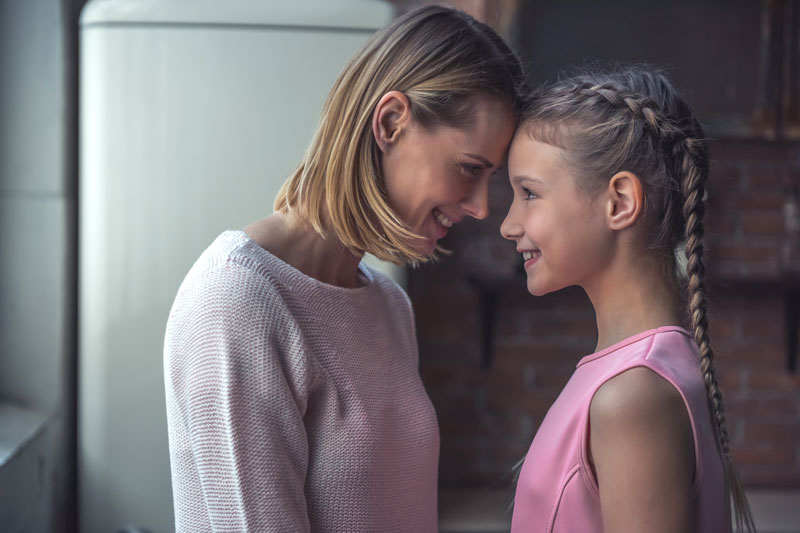At some point, most children are afraid of the dark, worried about monsters, or fearful of separating from parents. And it’s common for kids (and grown-ups) to feel nervous when entering new situations, presenting in front of others, or getting shots. For many children, though, the public health crisis of the last year has heightened worries.
- Mommy, check under my bed! I think there’s a monster under there.
- What if I don’t know anyone in my class?
- I don’t want to go to school! But I don’t want to sleep in my own bed. It’s scary!
If your child struggled with occasional anxiety before COVID, you may have seen increasing worries over these past 15 months, or you may be seeing fears emerge now as life begins to return to “normal.” Predictable routines often help keep anxiety manageable, but many of our typical patterns were disrupted by COVID. And as we start to emerge from the pandemic, some children are anxious about returning to school, summer camp, and family travels.
How to know if therapy is needed
Because anxiety is so common and such a typical part of children’s development, it can be hard to figure out when your child may need some extra support. After all, a little bit of anxiety is a good thing! Feeling some fear helps children to avoid danger and lets them “psych” themselves up for a performance or competition. But too much anxiety can begin to interfere with day-to-day life. Does your child’s anxiety keep them from having fun with friends, working at school, or accomplishing tasks at home? Does it cause a great deal of distress for them? Does your child avoid doing things that most kids their age find enjoyable—like going outside or talking to peers—because of anxiety? How much time are you spending dealing with your child’s anxiety on a daily basis? If any of the following are true, it may be helpful to contact a therapist with experience working with children with anxiety:
- When anxiety interferes with your child being able to engage in and enjoy age-appropriate activities (e.g., sleepovers, talking on the phone, play dates, eating at restaurants)
- When you or your child is spending a lot of time or energy “managing” fears (e.g., parents going back into their child’s room multiple times at night, engaging in a lot of reassurance, following very specific routines)
- When anxiety is affecting your child’s mood (i.e., your child is more irritable, sad, or frustrated)
- When your child or teen asks for help dealing with fears or worries
Therapy for anxiety
It’s not uncommon for anxious kids (or their parents) to be nervous about starting therapy. It can help to know what to expect!
Research tells us that cognitive-behavioral therapy (or CBT) is the most helpful for treating anxiety. In particular, therapy that incorporates “exposures” seems to work the best. Exposures are a way to gradually and systematically confront fears, and we know that this approach is highly effective for kids and teens. For instance, if a child is afraid of dogs, exposures may involve first looking at photos or videos of dogs, then watching dogs from a distance, then standing closer and closer, and finally petting a dog. In addition to using exposures, CBT for anxiety can also incorporate relaxation techniques and cognitive strategies, such as challenging unhelpful thoughts about feared situations.
Parents have a crucial role in CBT for anxiety, including helping structure exposures at home, learning how to “coach” kids through anxious episodes, and modeling how to face fears. Parents may also be asked to refrain from reinforcing or “feeding” anxiety by curbing reassurance or reducing attention to anxious behaviors. The therapist, parents, and child work together as a team to ensure that anxiety causes fewer problems over time and so that kids and families can get more joy out of life!
Tips for parents
Cognitive-behavioral therapy, including exposure therapy, is the best supported therapy for anxiety disorders in children. Most children who participate in CBT will show a significant reduction in anxiety. Parents should be actively involved in the treatment of anxiety because parents are on the frontlines and will need to encourage coping and facilitate exposure at home. Here are some questions to ask when looking for a therapist to treat anxiety:
- What is your approach to treating anxiety?
- Do you use cognitive-behavioral therapy?
- What is your experience doing exposure therapy with children?
- What is your experience treating children with [your child’s specific anxiety]?
- How do you engage children in treatment?
- How do you work with parents?
- How will you help us work on our goals outside of session?
- How will we know if my child is making progress?
- What is your experiencing collaborating with school staff?
If you’re not quite ready to engage with a therapist, yet, see my Resources page for parents and kids to work together on anxiety at home.

